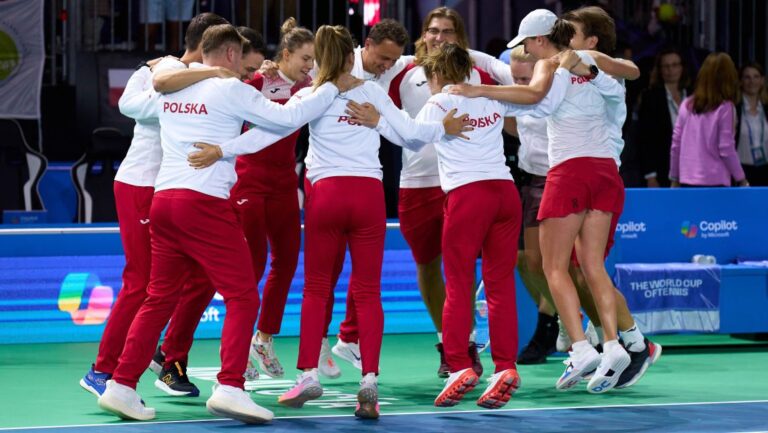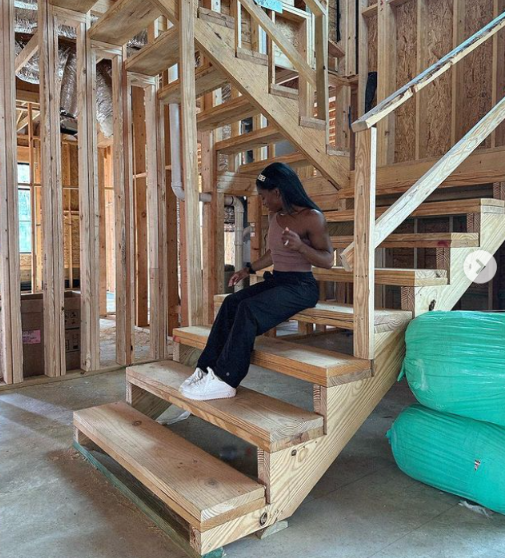“What the Hell Is the Umpire Looking At!” – Serena Williams’ Ex-Coach Infuriated by Anna Kalinskaya’s “Horrible” Double Bounce Controversy at US Open
The US Open, one of tennis’s most prestigious Grand Slam tournaments, has always been a cauldron of intense competition, high stakes, and occasionally, heated controversy. This year, the tournament has once again found itself embroiled in a heated debate over a controversial call, this time involving Russian player Anna Kalinskaya. The incident, which occurred during…
The US Open, one of tennis’s most prestigious Grand Slam tournaments, has always been a cauldron of intense competition, high stakes, and occasionally, heated controversy. This year, the tournament has once again found itself embroiled in a heated debate over a controversial call, this time involving Russian player Anna Kalinskaya. The incident, which occurred during a tense match, has drawn the ire of many, including the former coach of tennis legend Serena Williams, who did not hold back in his criticism of the umpire’s decision.
The Controversial Incident
The controversy erupted during Kalinskaya’s third-round match against her opponent, where a pivotal moment in the second set led to a heated exchange. Kalinskaya, known for her aggressive baseline play, hit a drop shot that appeared to bounce twice before her opponent could reach it. According to the rules of tennis, a double bounce means that the point should be awarded to the player who was unable to return the shot, in this case, Kalinskaya’s opponent.
However, the chair umpire did not call the double bounce, allowing the point to go to Kalinskaya, much to the dismay of her opponent and many watching the match. Replays shown on the stadium’s big screen appeared to confirm that the ball had indeed bounced twice, prompting an uproar from the crowd and a vocal protest from her opponent.
Serena Williams’ Ex-Coach Reacts
Among those who were most infuriated by the umpire’s failure to call the double bounce was Patrick Mouratoglou, the former coach of Serena Williams. Mouratoglou, who is known for his candid and often blunt commentary, took to social media to express his disbelief and frustration.
“What the hell is the umpire looking at!” Mouratoglou tweeted, igniting a firestorm of reactions online. “This is a horrible call, and it’s unacceptable at this level of the game. How can something so obvious be missed? This is not just a mistake; it’s negligence.”
Mouratoglou, who has coached some of the biggest names in tennis and has been involved in several high-profile matches himself, went on to criticize the current state of officiating in tennis. “We have the technology to avoid these kinds of errors, yet they keep happening. The integrity of the game is at stake when such blatant mistakes are allowed to stand,” he continued.
The Role of Technology in Modern Tennis
Mouratoglou’s comments have sparked renewed debate about the role of technology in tennis. While the Hawk-Eye system is widely used to determine line calls, the technology for detecting double bounces or other nuanced aspects of play is not as advanced or universally implemented. This has led to calls for more comprehensive technological solutions that could assist umpires in making accurate decisions in real-time.
Many within the tennis community agree with Mouratoglou’s assessment, arguing that the sport cannot afford to have its outcomes marred by avoidable mistakes, especially at the Grand Slam level. “The stakes are too high, and the players work too hard for their efforts to be undermined by poor officiating,” said one former professional player turned commentator.
Kalinskaya Responds to the Controversy
Kalinskaya, for her part, addressed the incident in her post-match press conference. When asked about the controversial point, she maintained that she was focused on the game and did not realize the ball had bounced twice. “In the heat of the moment, you’re just trying to play the next shot. I didn’t see it bounce twice, and I trust the umpire’s call,” she said.
However, she also expressed empathy for her opponent, acknowledging that the incident was unfortunate. “I understand why she was upset, but as players, we have to play according to the calls made. It’s not something I can control,” Kalinskaya added.
The Umpire’s Perspective
The chair umpire involved in the match has faced significant scrutiny since the incident. While the umpire has not made an official statement, sources close to the tournament’s officiating team have indicated that there was a review of the call after the match. It is unclear whether any action will be taken, but the incident has reignited discussions about the pressure umpires face and the importance of ensuring that they have the tools and support needed to make accurate decisions.
Public and Professional Reactions
The incident has drawn a wide range of reactions from fans, players, and commentators alike. Social media has been ablaze with opinions, with some defending the umpire’s decision as a human error in a fast-paced game, while others have echoed Mouratoglou’s call for better use of technology.
“Human error is part of the game, but when technology exists to prevent it, we should use it,” tweeted a prominent sports journalist. Another former player chimed in, saying, “We need consistency. If the technology can help the umpire, then why not use it?”
Meanwhile, Kalinskaya’s opponent, who chose to remain unnamed in the media, has reportedly filed a formal complaint with the tournament officials. The outcome of this complaint is yet to be determined, but it adds another layer to the ongoing debate about the standards of officiating in professional tennis.
Looking Forward
As the US Open continues, the incident involving Kalinskaya and the controversial double bounce is likely to remain a talking point. The tournament organizers have so far remained silent on whether any immediate changes to officiating protocols will be implemented, but the pressure from players, coaches, and fans is mounting.
The broader implications of this controversy may extend beyond just this year’s tournament, potentially influencing how tennis is officiated in the future. Whether through improved technology or enhanced training for umpires, the tennis world will be watching closely to see how the sport responds to ensure fairness and accuracy in one of its most prestigious events.
For now, the focus remains on the players as they continue to battle it out on the courts of Flushing Meadows, but the shadow of this controversy will likely loom over the remainder of the tournament. As the debate rages on, one thing is clear: the stakes in tennis are higher than ever, and the margin for error is razor-thin.




